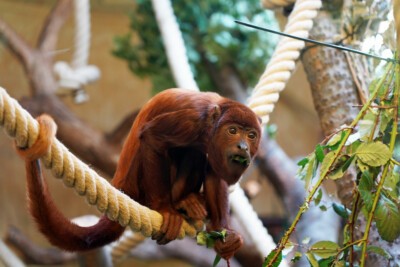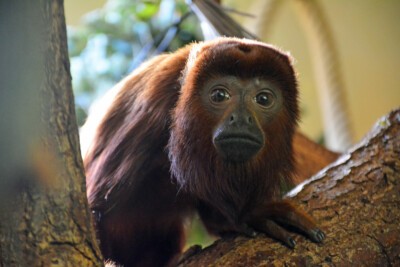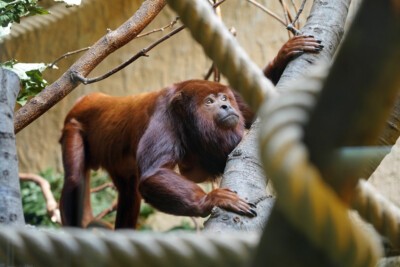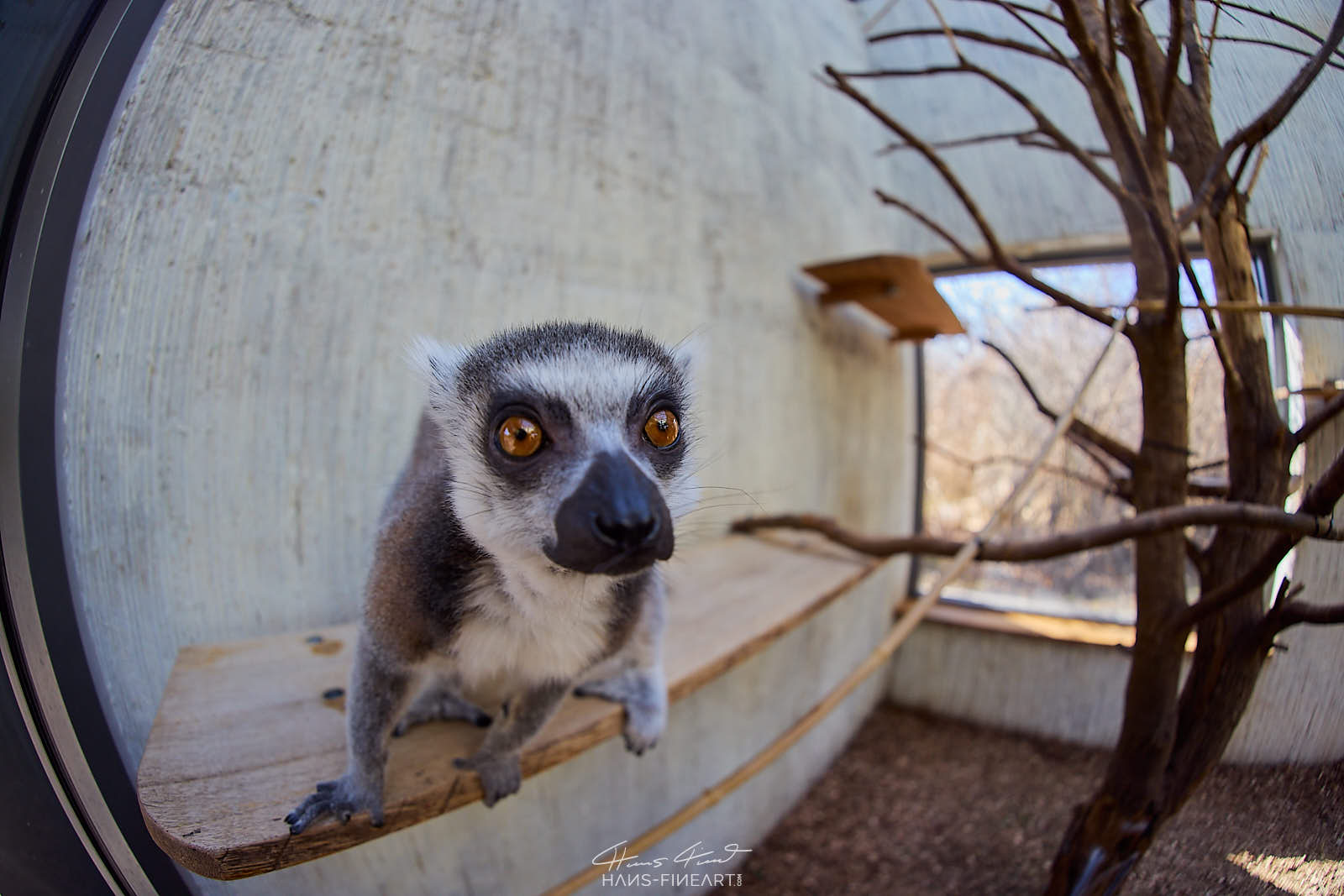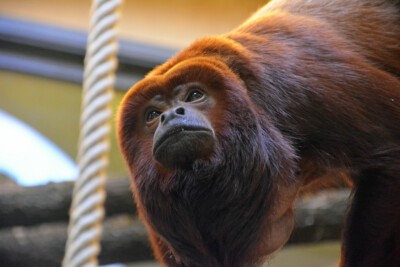More monkeying around at the zoo
Animal news | 4 April 2023
As of today, there’s a new animal species to discover at Dresden Zoo. Three Colombian red howler monkeys from Cologne Zoo have taken up residence in Prof. Brandes House. The group consists of Platano (male, 6 years), and his half-sisters Yona (female, 4 years) and Dayany (female, 3 years). Their journey to Dresden and their arrival this afternoon went smoothly and was very relaxed.
The Colombian red howler belongs to the Atelidae family and is one of 11 to 14 species in the howler monkey genus. Howler monkeys are known for their low-pitched, howling choruses, in which both sexes participate and which can be heard for miles. Their eponymous roar serves as a means of communication towards other groups to warn them of their presence.
Particularly characteristic of all atelids is their strong, long prehensile tail, which these forest dwellers use to move nimbly through the treetops. The prehensile tail is used as a fifth limb and can support their entire body weight.
Colombian red howler monkeys are originally native to northern South America, where they are found in a variety of forests from coastal mangrove forests to cloud forests in the mountains. They feed purely on foliage, fruits and fresh shoots.
Acclimatisation and planned socialisation
For now, the new howler monkey group has been homed in the crowned lemur enclosure in Prof. Brandes House. To make way for them, the pair of crowned lemurs that normally lives there has been moved temporarily into an enclosure at the back of the house and cannot be seen by visitors during the settling-in period.
Once step one of the acclimatisation process has been successful and the howler monkeys have got used to each other, part two begins: putting the new howler monkeys in with our woolly monkey Ricardo. What we want to see is our new red howler monkeys successfully cohabiting with our male woolly monkey. It would be a fitting community to live in, as these two species of the Atelidae family share the same natural geographical range in northern South America as well as the same habitat. In addition, the woolly monkey enclosure offers the perfect climbing conditions for both species and doesn’t need to be converted for the new co-inhabitants.
If the meeting goes well, visitors will in future be able to see the howler monkeys and woolly monkey Ricardo together in the current woolly monkey enclosure, while the crowned lemurs will move back to their original home.
We’ll give the animals plenty of time and space to find their feet.
